5 Things I’ve Learned Editing for Publishers
Last year, I successfully completed and passed the (very hard, very tricky) Macmillan editing test and joined the publisher’s ranks of active freelancers. I’ve now worked on copyediting, proofreading, and cold reading* projects for several imprints (Tor, Nightfire, Forge, Bramble, St. Martin’s Press, Wednesday Books, and others) for almost a year, and I’ve learned a few surprising things about the trad publishing sausage-making.
Whether you aspire to traditionally or self-publish a book, you’ll probably find some useful info in this look behind the curtain. So here are the top five things I’ve learned:
Multiple rounds of editing are standard
After a book goes through the acquisition process at a Macmillan imprint (more on that in a bit) and is scheduled for publishing, it gets three rounds of editing from three different freelancers: a copyeditor, a proofreader, and a cold reader. (*A cold reader is just that—someone unfamiliar with the book who reads it, start to finish, in its publishable format, looking for any remaining errors or issues.)
The copyeditor removes mechanical errors (grammar, spelling, punctuation, etc.). The author reviews the copyeditor’s work and accepts/rejects their suggestions. The book is then typeset and designed. The proofreader catches any remaining errors or any introduced during the author round, plus reviews the typesetter’s work. Finally, the cold reader is the last defense against errors that slipped past everyone else.
Why so many rounds? Because each is a backup for the others to ensure a quality product. Macmillan at least (and this is true of most traditional publishers) has found through experience that this is the most efficient and effective way to produce a nearly perfect book (yes, nearly; nothing’s foolproof, and here’s why). But whether that will continue to be their process as AI disrupts the publishing world is a whole ‘nother conversation.
So should every book go through multiple rounds? (Lookin’ at you, self-publishing authors.) Emphatically, yes. If you can swing it, do it. I’ve seen too many remaining errors in my cold reads to not believe in the benefits of multiple rounds of editing.
Author preferences reign supreme
While I do work under a house style guide (a document that lists the publisher’s preferences for things like capitalizations, spelling, punctuation, etc.), the number one rule on that guide is this:
DO NOT CHANGE THE AUTHOR’S STYLE
The prime directive is to honor author preferences in everything. Do they spell a word a certain way? Leave it. Punctuate things with a million semicolons? Don’t touch ’em. (All with the caveat to query the author if what they’ve done is flat wrong.)
The imprints take a very hands-off approach to corrections, giving their authors a lot of leeway to use language creatively, which I dig.
Manuscripts are squeaky clean before they’re edited
When I receive a copyediting project from Macmillan, the manuscript is very, very clean. What I mean by that is most egregious grammar, spelling, and punctuation mistakes are already handled.
While I’m not privy to exactly what each manuscript goes through before it gets to me, I do know that:
- The acquisitions editor (the person who decides to acquire the book) helps edit the story itself, something called developmental editing, before it publishes.
- Sometimes an acquisitions editor will also line edit the book. A line edit deals with sentence structure and flow.
- The production editor (who shepherds the book through production) helps format the manuscript itself: font, margins, spacing, headings, etc.
- In all of those processes, I’m sure some grammar, spelling, punctuation, and other mistakes are removed.
However, I suspect the authors are already very good writers at the line level. They don’t submit a manuscript with many tense or POV shifts. They know where commas go. They understand how to punctuate dialogue and avoid dangling modifiers. All things they’ve probably worked on to become masters of their craft. Which is probably why they’re traditionally published.
Food for thought!
Common pacing trends show up across genres
I’ve noticed a few commonalities in the manuscripts I’ve edited so far, whether they’re fantasy, sci-fi, horror, romance, or anything else.
- Paragraphs are on the shorter side.
- There are less dialogue tags (he said, she said) and more action beats.
- Choreography is kept minimal and tight.
All of the above are pacing tricks that help keep a book moving and a reader engaged. Think about incorporating those into your book, especially if a reader complains the story is “too slow.”
The common wisdom about what gets published is bunk
Self-published books don’t get picked up by trad publishers. You have to keep your book under a certain word count. Debut authors won’t get published if they don’t have lots of followers.
I’m sure you’ve heard some or all of the above on your writing journey from well-meaning people. I’m here to tell you, it’s all bunk for the right story.
So far, I’ve worked on multiple books published by Macmillan that fly in the face of that “common wisdom”:
- A horror, a paranormal romance, and a traditional romance that were all self-published first before they were picked up by Macmillan.
- A fantasy by a debut author that clocked in at more than 150K words.
- A sci-fi novel by a debut author who doesn’t have any social media accounts or a website.
What did those books have in common? The stories were AMAZING.
So if you have a great story but think you can’t get it traditionally published because of one or more of the above, go for it anyway! You never know what might happen.
One last thought
After editing for both indie authors and now a traditional publisher, I want to leave you with this:
My indie clients write books just as amazing, interesting, vivid, well-written, and entertaining as those I’ve worked on for Macmillan. So never think that self-publishing is the second-best option, or that indie authors aren’t as good at writing an excellent book.
That is just. not. true. Either path is as valid as the other. Choosing the right one for your book is simply a matter of the tasks involved and your goals.
That’s it. Full stop.
***
If you’re ready to take that big step and get a professional opinion on your manuscript draft, check out my Story Diagnostic service: a kind, gentle assessment of your book’s strengths and suggestions for making it even better. Contact me to get on the waiting list for a spot in 2024.




